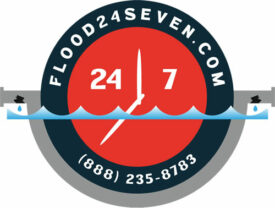Long Island, with its picturesque landscapes and proximity to the ocean, is no stranger to the devastating impact of floods. While these natural disasters may be unpredictable, being prepared and having access to reliable flood remediation services can make all the difference in minimizing damage and restoring homes and businesses to their former glory.
Today, we discuss the importance of flood remediation services on Long Island and surrounding areas, as well as the significance of flood zones in our region.
Flood Remediation Services in Long Island: Your Lifeline in Times of Crisis
When the unexpected strikes and water breaches your property, professional flood remediation services are your best ally. A local company serving Long Island, with its in-depth knowledge of the area and experience with flood damage restoration, Flood 24/7 can provide prompt response and efficient solutions to mitigate the aftermath of flooding. From residential homes to commercial establishments, our services encompass a wide range of expertise, including:
1. Emergency Water Extraction: Utilizing state-of-the-art equipment, flood remediation experts efficiently remove standing water from affected areas, preventing further damage and reducing the risk of mold growth.
2. Structural Drying and Dehumidification: By implementing advanced drying techniques, professionals ensure complete moisture removal to prevent structural weakening, odors, and mold formation.
3. Mold Remediation: Floodwaters can create a breeding ground for harmful mold and bacteria. Local companies employ certified mold remediation specialists who identify and safely remove mold, ensuring a healthy living or working environment.
4. Document Restoration: Water-damaged documents, photographs, and other valuable assets can often be salvaged through specialized restoration techniques, preserving cherished memories and vital records.
5. Content Cleaning and Restoration: Flood remediation services extend beyond structural elements. Trained professionals employ advanced cleaning methods to restore damaged furniture, electronics, and personal belongings.
Flood Zones on Long Island: Understanding and Navigating Risk
Long Island’s unique geography, including its proximity to the Atlantic Ocean and numerous waterways, means that certain areas are more susceptible to flooding than others. Understanding flood zones is crucial for homeowners, renters, and business owners to make informed decisions regarding insurance coverage and property investments.
Living on Long Island necessitates a thorough understanding of flood zone locations and the need to safeguard properties within these areas. About 15% of the island’s population, approximately 220,000 people, reside in flood-prone zones. After Hurricane Sandy FEMA reassessed flood zone designations, revealing the true vulnerabilities of different areas on the island.
To ensure safety during floods or predicted storm surges or other potential flooding, it is crucial to know emergency evacuation routes and locate nearby hurricane shelters. Preparing a bag with essential items like water, non-perishable food, medications, clothing, important documents, flashlights, batteries, and a battery-powered or hand-crank radio is advisable when severe storms are forecasted, or anytime there is potential of flooding. Your best defense is being prepared.
The south shore of Nassau and Suffolk Counties, particularly Fire Island, witnesses the largest flood zones. Amityville Harbor, Atlantic Beach, Long Beach, South Oyster Bay, Middle Bay, East Bay, and Montauk Point are most susceptible to high storm surges. Additionally, the North and South Forks, due to their low elevation and positioning, are at risk during strong hurricanes. The impact of a storm is also influenced by the tide cycle, with high tide exacerbating the damage. Recently, we have also explored the causes of flooding in Suffolk and Nassau Counties.

